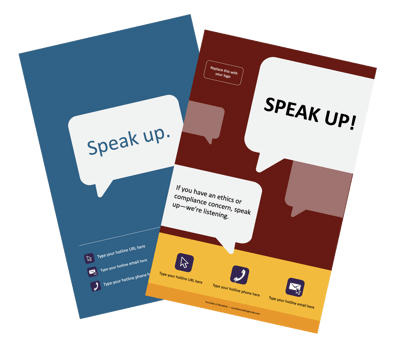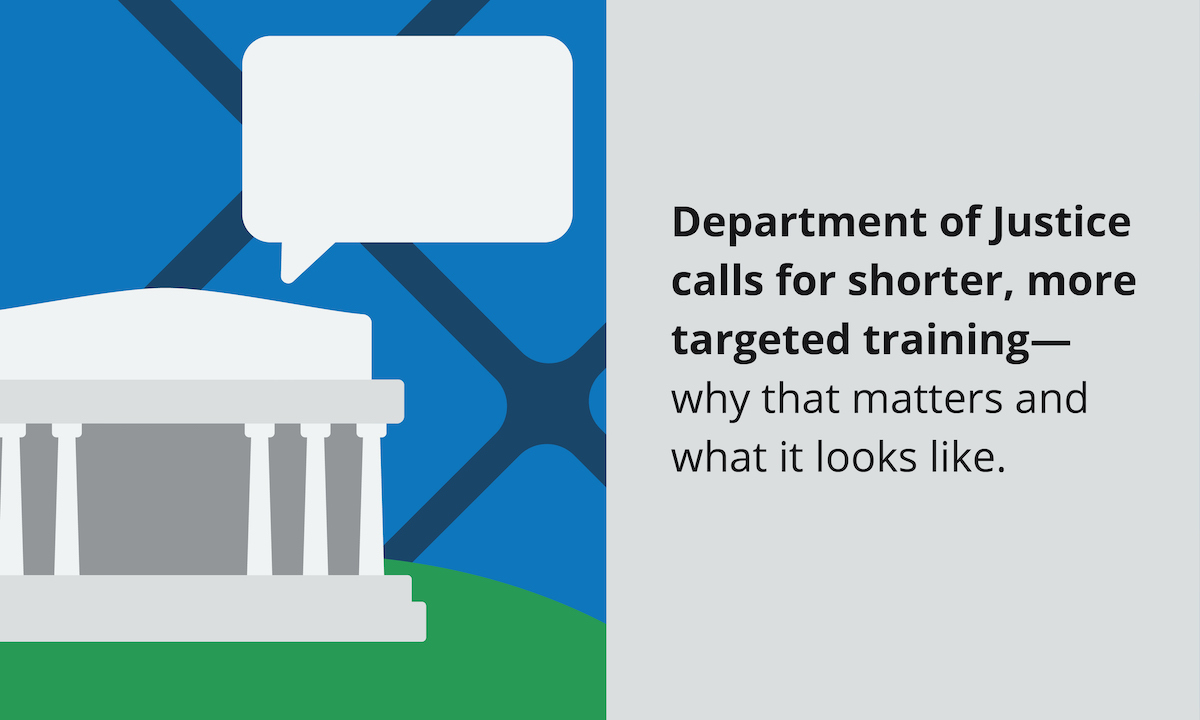
Department of Justice calls for shorter, more targeted training—why that matters and what it looks like.
The Department of Justice revised their Evaluation of Corporate Compliance Programs last week, and one of those changes was a call for shorter, more targeted compliance training.
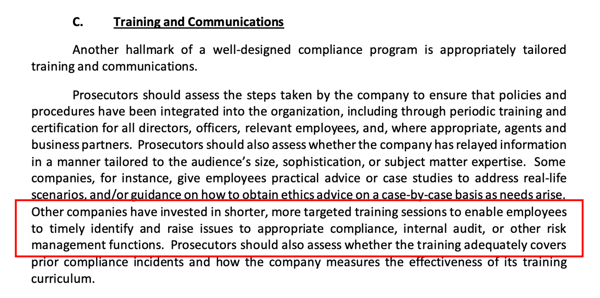 And of course, Broadcat sells shorter, more targeted compliance communications and training. That is our niche and we own it. So I was initially skeptical that I was reading the guidance the right way—it felt too good to be true, so I wanted to wait to see how other people were reading it before we started talking about it.
And of course, Broadcat sells shorter, more targeted compliance communications and training. That is our niche and we own it. So I was initially skeptical that I was reading the guidance the right way—it felt too good to be true, so I wanted to wait to see how other people were reading it before we started talking about it.
Then we saw this from the BigLaw firm Latham and Watkins:
 And this from the BigLaw firm Sidley Austin:
And this from the BigLaw firm Sidley Austin:
 And this from the BigLaw firm Paul Hastings:
And this from the BigLaw firm Paul Hastings:
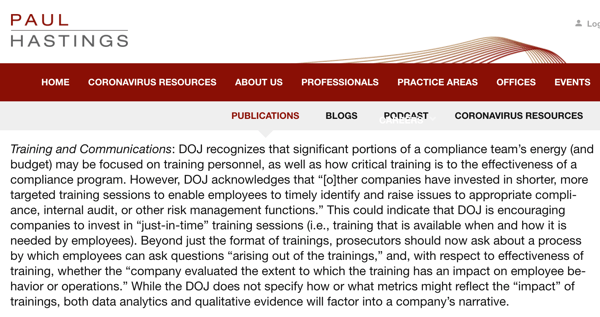 And this from mega-analyst firm Gartner:
And this from mega-analyst firm Gartner:
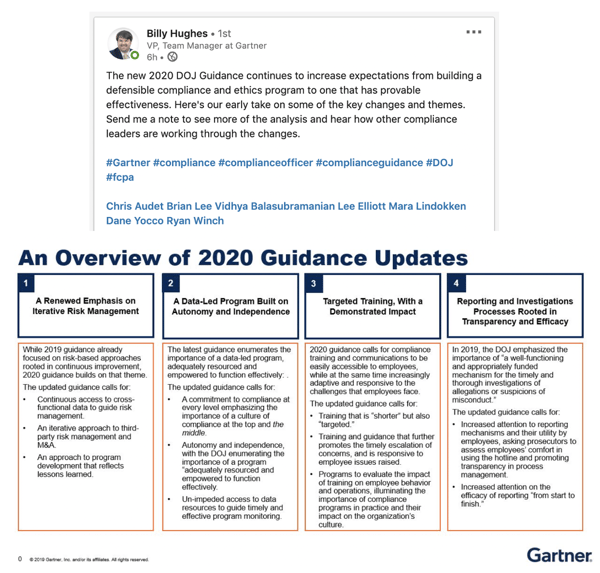 And I don’t know if you know this, but those folks tend to be, like, conservative on stuff. So it’s legit: the DOJ is talking about shorter, more targeted training.
And I don’t know if you know this, but those folks tend to be, like, conservative on stuff. So it’s legit: the DOJ is talking about shorter, more targeted training.
Why this is a big deal.
Because shorter, more targeted training is more effective, more business-friendly, and cheaper. Everyone believes this.
I don’t think I know anyone who has seriously claimed that long e-learning sessions actually work better. No one I know in compliance is even willing to defend it, because when other functions like HR and IT inflict the same type of thing on those folks in compliance, those folks hate it too. This includes vendors—they talk about it like, “Yeah, it’s pretty bad, but the clients think they need it so what are you gonna do?”
The fact that it survived this long is because the DOJ was kinda vague on what counted. So even if you personally believed it was pointless overkill, you didn’t want to be the person who got rid of it and then got blamed for getting blasted by the DOJ. That’s self-preservation 101.
And so, yes, even though the DOJ has been saying stuff like this for years, there is a big difference between a theme you have to extract from interviews and enforcement actions and something that is explicitly set out in the Evaluation of Corporate Compliance Programs.
And now it’s there.
What shorter, targeted training looks like.
OK, so shorter and targeted. What does that mean?
First, note that “shorter” and “targeted” are not the same thing. You can make generic stuff shorter pretty easily; you just make it even more vague and high-level.
Don’t do that. That’s short, but not targeted. Most “microlearning” falls in this bucket; that’s not getting the job done.
Instead, think about specific audiences. Instead of “all-employees,” think about audiences like “sales” and “finance” and so on, and how your risks apply to them. That’s targeting.
Both sales and finance need to know about corruption, for example, but they need to know different things. Focusing on the “how it applies to them” part will inherently let you make things massively shorter—you’re not trying to explain everything to everyone and you can leverage all the context about how people work. Practically, this means you will be collapsing long, generic e-learning modules down into a series of one-pagers for specific job functions, like these:
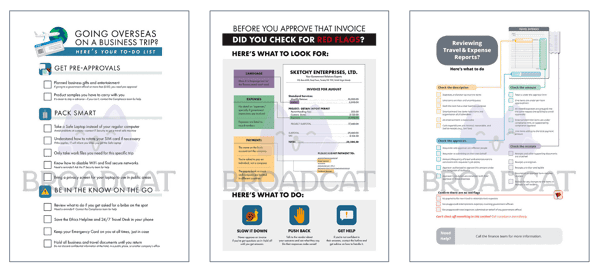 This is short, targeted, and easier to understand and apply for your employees. That is what you are looking for here.
This is short, targeted, and easier to understand and apply for your employees. That is what you are looking for here.
It’s a good news/bad news situation.
OK, so I’ve got some good news and some bad news.
Bad news first: it is super hard to make short, targeted stuff.
It is easy to make generic stuff: I can write a course on general anti-corruption in an afternoon because I only need to understand the general contours of the law. I don’t need to know much about my audience or business because I just say it’s their job to figure out what it means for them.
Making something targeted, on the other hand, means I have to understand the law, what my target audience does, and how it applies to them so I can create something from their context. It requires mastery of the law, business process, and a high level of precision in drafting, layout, and design.
Anyone can summarize the FCPA in a video or slide deck; telling a sales manager what to look for in an expense report to catch red flags for bribery is another thing altogether, and translating that into a short format is even harder. One of our in-house friends told us that putting together a good compliance checklist would take months if done internally.
So, bad news: short and targeted stuff is better, cheaper, and more effective—but a lot harder to make.
Good news: you don’t have to make it, because it exists already.
Yup. It’s all in Compliance Design Club.
* Flexible: you pay for what you use
* Editable: you can customize (and re-customize) it in minutes
* Affordable: no long-term contracts, and you get to keep what you buy
Yeah, seriously. This is Compliance Design Club. It even makes targeting easy by letting you filter the infographics, checklists, decision trees, posters, graphics, and more by the audience you’re trying to target:
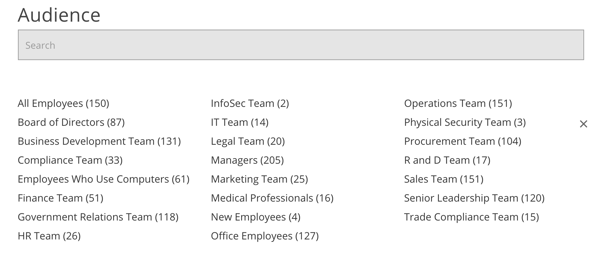 And on top of all of that, we give you a free surprise tool each month, subscription-box style. Here’s the video explainer of the onboarding slides we gave our Members back in March:
And on top of all of that, we give you a free surprise tool each month, subscription-box style. Here’s the video explainer of the onboarding slides we gave our Members back in March:
Yeah. It’s like nothing else in corporate compliance.
And … like exactly everything else in your entire life because the compliance market is ridiculous and weird. It’s like we’re combining Netflix and Birchbox together when everyone else is trying to convince you to buy a five-year subscription to cable for 500 channels you’ll never watch.
But don’t take my word for it. Get started for free by downloading these customizable hotline posters and see how easy it is to work with our content.
Just click the button below, try it out, and then get in touch.



